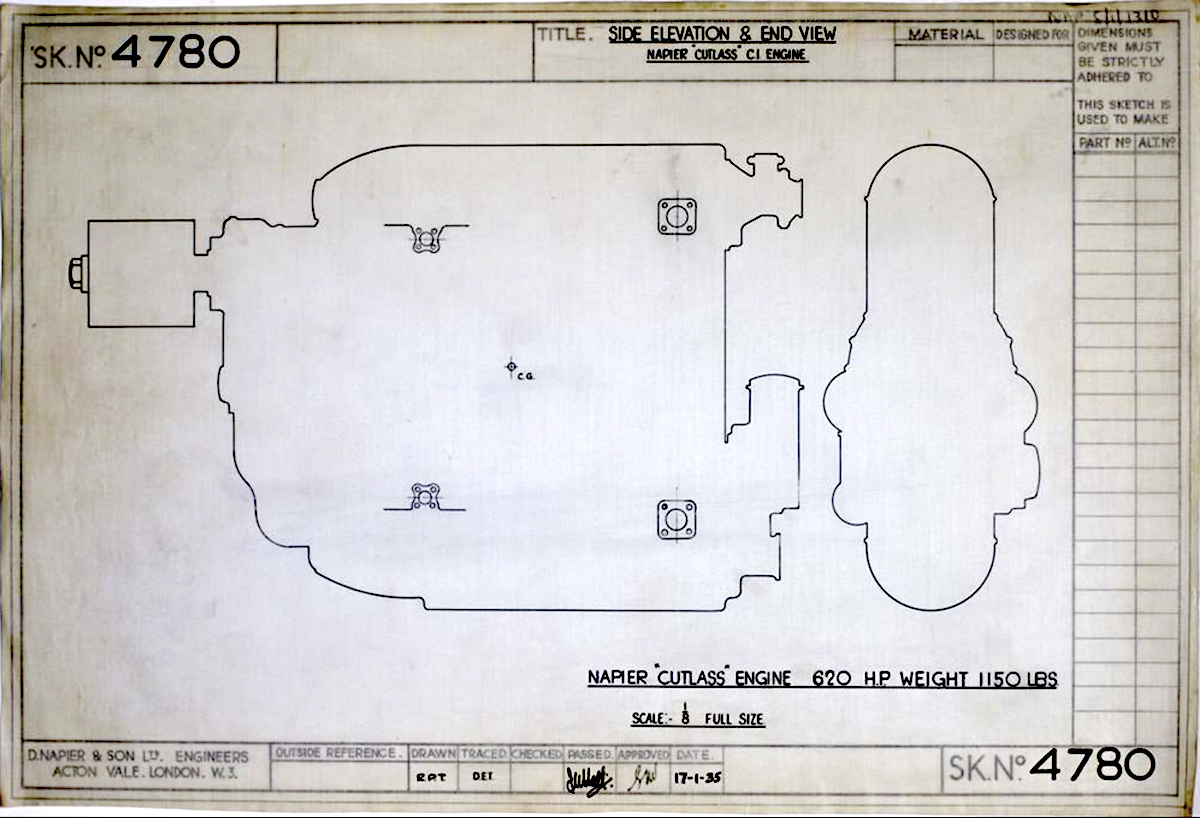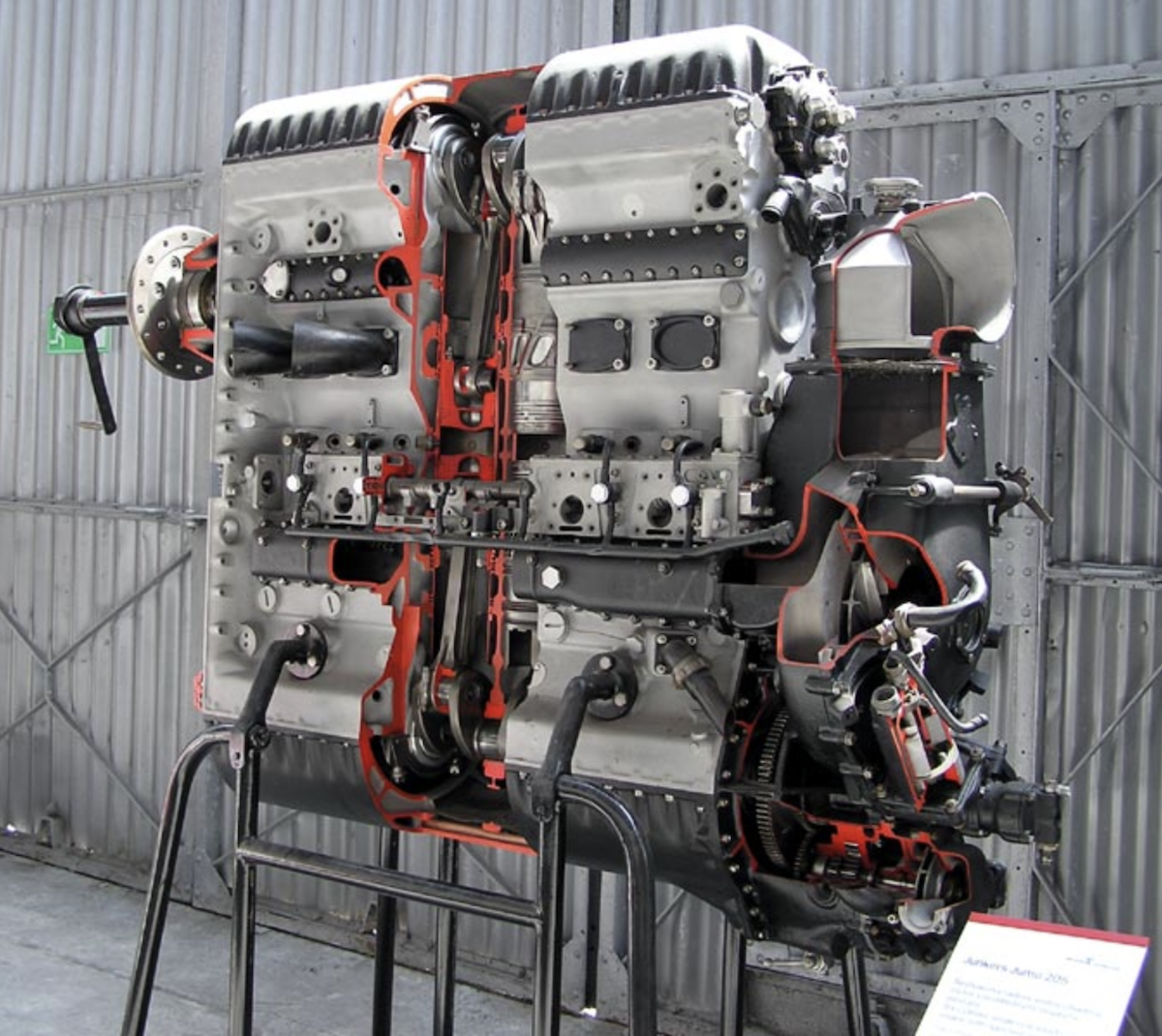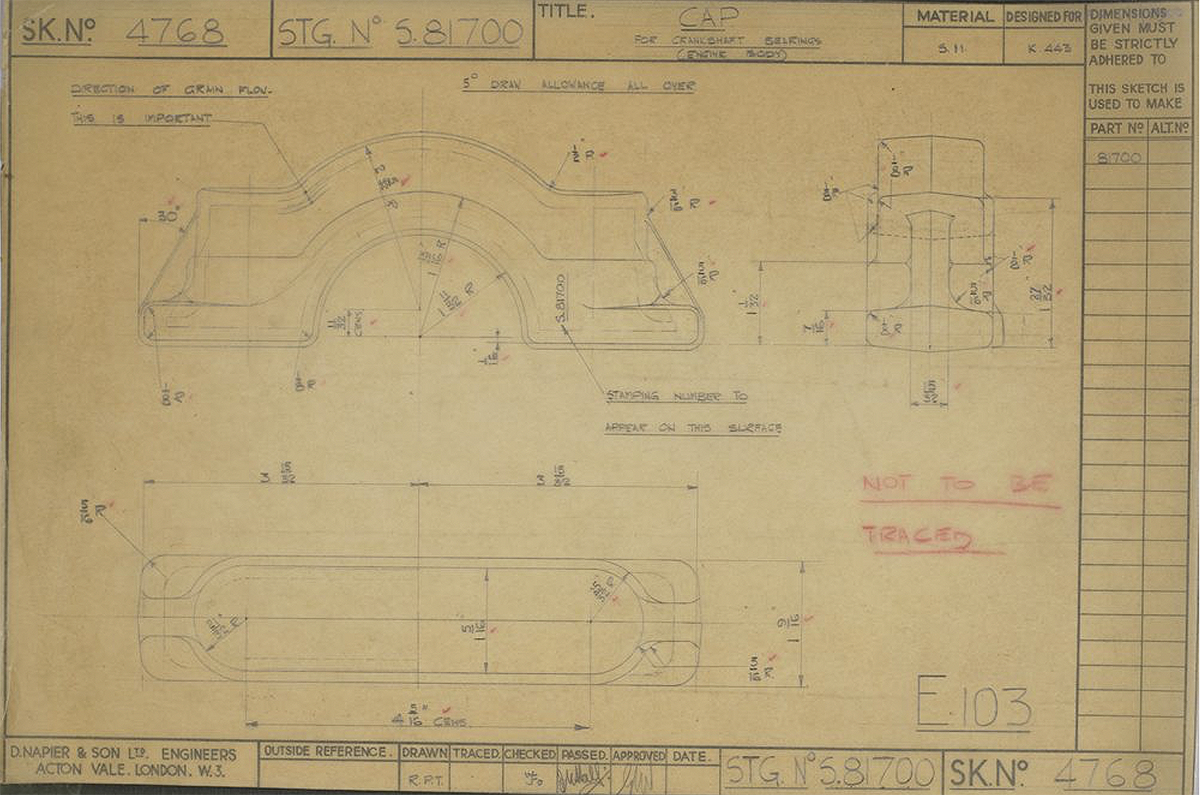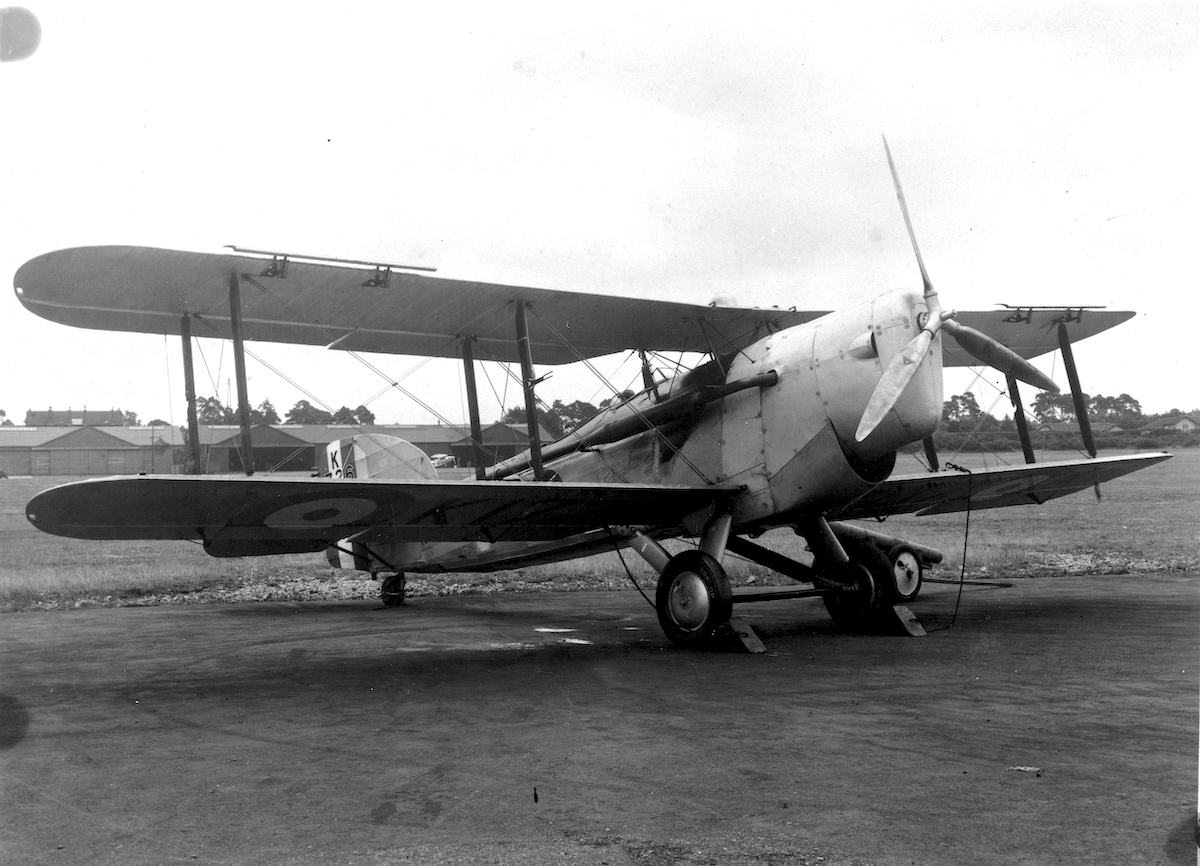Napier Cutlass
The Napier Cutlass was a six cylinder opposed piston compression-ignition engine originally designed by Junkers Flugzeug und Motorenwerke AG. Hugo Junkers created several opposed piston CI aero engines and the Cutlass was based on the Junkers Jumo 5 later 205 engine. Napiers business had decreased significantly since the Napier Lion engine had been superseded by more powerful equivalents. In an attempt to keep such a strategically important company in business George Bulman at the Air Ministry ‘encouraged’ D Napier & Son to enter into an agreement for manufacturing and selling rights for the Junkers 204 and 205 opposed piston engine designs in the UK. These compression ignition engines were far further down the development line than Napier’s E101 24-cylinder ‘H’ Diesel engine (the forerunner to the Napier Sabre engine). The Air Ministry had a requirement for such engines so it seemed that this would be a good deal!
The Napier Cutlass and Culverin would be another avenue of aero engine design that Napiers would pursue. After the ‘W’ Lion, ‘X’ Cub and in-line and ‘H’ air-cooled engines these were six cylinder in-line opposed piston compression ignition engines. This extraordinary engine concept originated from a contemporary of Rudolf Diesel called Wilhelm von Ochelhauser who passed his knowledge on to Hugo Junkers. During the 1930’s Junkers developed a range of six cylinder vertically opposed aero engines in conjunction with similar engines for vehicles, generators, etc. The Junkers 205 was the smallest and considered to be the most successful diesel aero engines with more than 900 produced. They had a bore of 105mm and stroke of 160mm x 2, dimensions which were somewhat easier to work with than the imperial equivalent! The 205 had a maximum power rating of 690 hp @ 2,500 RPM at sea level.
The Napier / Junkers agreement was signed and sealed in April 1934 and work commenced to re-draw the Junkers 204 (Napier Culverin) and 205 (Napier Cutlass) engines to imperial measurements. As can be seen in the images the Napier Drawing Office did work on the Cutlass design. In 1934 Air Ministry placed a contract with the company for seven Culverin engines but had not decided what to do with the smaller Cutlass. In fact, this engine design was never manufactured by D Napier & Son however examples of the larger Napier Culverin engine were built and tested.
HOWEVER during the Napier development programme the Air Ministry was supplied with several Junkers 205 engines to assist in the development programme. Fairey Gordon K1726 had a trial installation of a Jumo V (205C) during December 1936. This aircraft was part of a batch of eight Fairey IIIF Mk IVB aircraft (Fairey Nos. F.1420 – 1427) that were in fact converted to Fairey Gordons on the production line.





